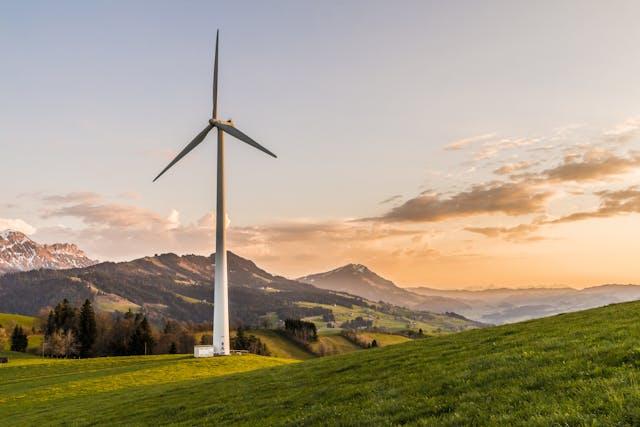
We will navigate the complex landscape where cutting-edge technologies collide with the imperatives of environmental stewardship in this article. From renewable energy solutions and smart resource management to innovative approaches in agriculture and waste reduction, we will examine the numerous ways in which technology is not only adapting to but also actively contributing to the resolution of environmental challenges. As we read through, it becomes clear that the union of innovation and environmental conservation is a tangible force reshaping our relationship with the planet.
Renewable Energy: Powering the Future Sustainably
The increasing demand for energy and its associated carbon footprint is one of the most pressing environmental issues of our time. Traditional energy sources, such as fossil fuels, have long been implicated in climate change. However, the introduction of renewable energy technologies is transforming the energy landscape.Solar power, wind energy, and hydropower are at the forefront of this revolution and breakthroughs in solar panel efficiency and affordability have made harnessing the power of the sun more accessible than ever. Similarly, advancements in wind turbine design and technology have significantly increased the efficiency of wind power generation. Hydropower, too, continues to evolve with innovations like underwater turbines and tidal energy systems.
Smart Cities: Redefining Urban Sustainability
The global trend toward urbanization has put enormous strain on the environment. Smart city technologies, on the other hand, are emerging as a powerful force in creating urban environments that are not only sustainable but also efficient and livable.Smart grids are revolutionizing how cities manage energy consumption by optimizing distribution and reducing waste. Intelligent transportation systems improve mobility while reducing congestion and pollution. Furthermore, the use of IoT (Internet of Things) devices in urban infrastructure allows for real-time monitoring and data-driven decision-making, which aids in resource conservation and environmental efficiency.
Circular Economy: Reducing Waste and Promoting Sustainability
The "take, make, dispose" linear model has long been associated with environmental degradation. However, the concept of a circular economy is gaining traction as a powerful solution to waste and pollution reduction.Technological advancements are at the heart of the circular economy, facilitating material recycling and repurposing. Advanced recycling technologies, such as chemical recycling and pyrolysis, are allowing valuable resources to be recovered from previously non-recyclable waste streams. 3D printing is also helping by enabling on-demand manufacturing, which reduces the need for mass production and the waste that comes with it.
Precision Agriculture: Revolutionizing Food Production
Agriculture has a significant environmental impact, ranging from deforestation to the use of chemical fertilizers. Precision agriculture is transforming the way we produce food by making it more sustainable and efficient, thanks to technological innovation.Drones equipped with advanced sensors monitor crop health, allowing farmers to optimize irrigation and reduce pesticide use. Big data analytics and artificial intelligence are being used to analyze massive amounts of agricultural data to provide insights that can improve crop yields while minimizing environmental impact. Vertical farming and aquaponics, made possible by controlled environment agriculture technologies, are redefining traditional farming's spatial and resource requirements.
Conservation Technologies: Protecting Biodiversity
The alarming rate of biodiversity loss necessitates novel conservation solutions and technology is rising to the challenge, providing tools and strategies to monitor, protect, and restore ecosystems.Satellite imagery and drones, for example, are invaluable for monitoring changes in landscapes and habitats. This data is analyzed by AI algorithms, which provide real-time insights into deforestation, poaching, and other threats to biodiversity. Conservationists are also using genetic technologies, such as DNA barcoding, to identify and track species, which is helping to combat illegal wildlife trade.
Ocean Cleanup: Tackling Plastic Pollution
Plastic pollution is endangering the health of the world's oceans and innovative technologies are being used to confront the crisis head on.Ocean cleanup initiatives, such as the development of self-driving boats and specialized vessels, are aimed at collecting and removing plastic waste from the oceans. Advanced recycling technologies are being used to convert collected ocean plastics into valuable resources, effectively closing the plastic life cycle loop. Furthermore, biodegradable materials and alternative packaging solutions are being developed to reduce the overall reliance on single-use plastics.
In charting our course through the intricate challenges of the 21st century, the pivotal role of technological innovation in environmental conservation looms large. Our trajectory is adorned with noteworthy milestones, from the ubiquitous embrace of renewable energy sources and the inception of smart cities to the advocacy for circular economies, the precision of agricultural practices, and the strategic deployment of cutting-edge conservation technologies and ocean cleanup initiatives. Each step in this journey through the intersection of technology and environmentalism has not merely been progress but a testament to transformative advancements, underscoring the profound impact that innovative solutions can have on our collective efforts to preserve and protect the planet.
Article
Be the first comment
Elite Article
50,017 Views
0
0
1,358 Views
0
0














